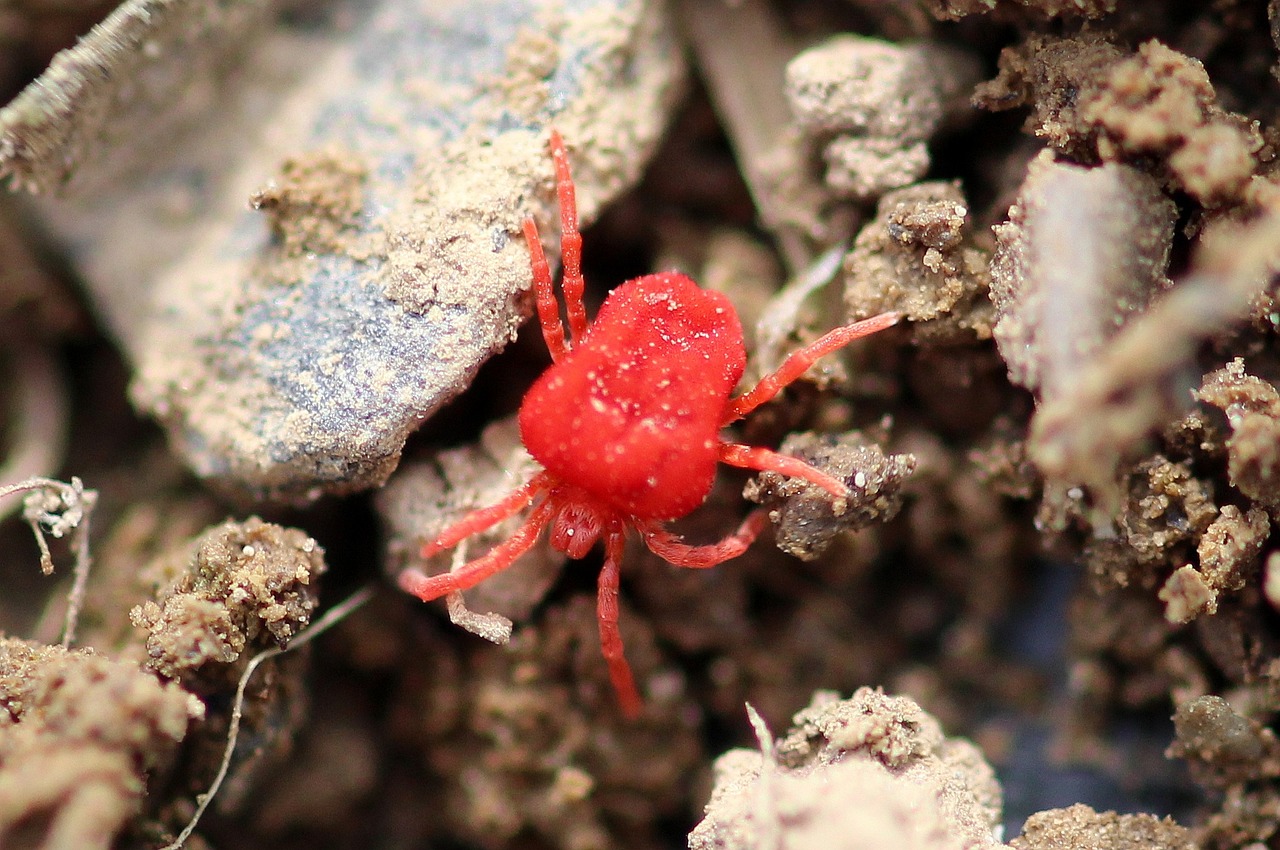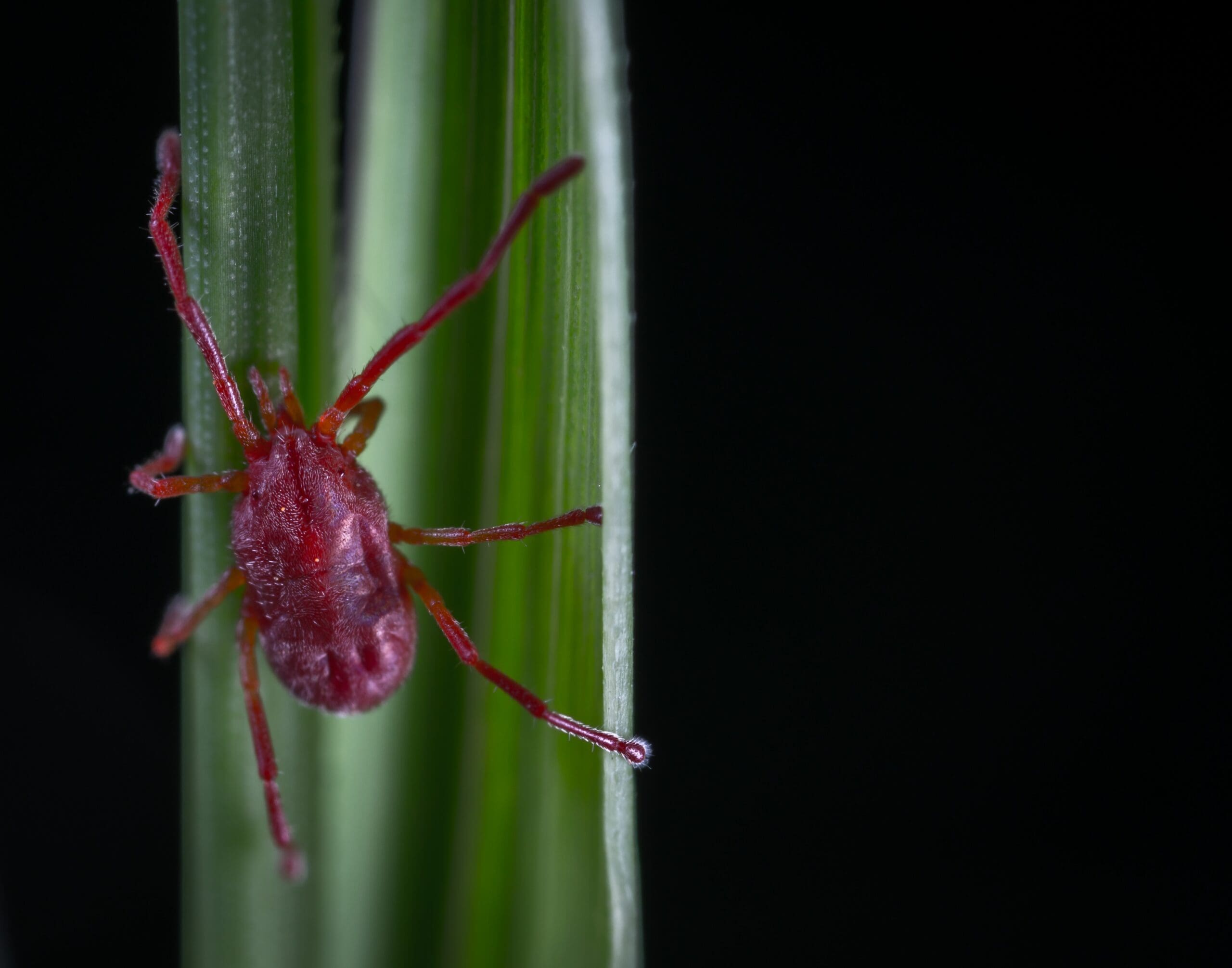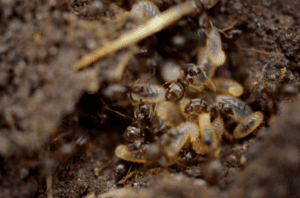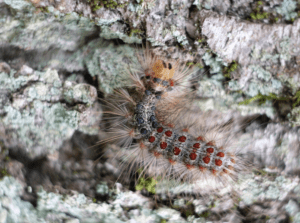
You’ve probably seen a clover mite or two at one point or another; they’re the tiny, red, spider-looking creatures that gather on plants and sunny walls. While they are only a nuisance pest, it is worth getting to know them a little better, especially if you’ve seen them around your property. Read on to learn all about clover mites.

What Do Clover Mites Look Like?
Clover mites, scientifically named Bryobia praetiosa, are tiny arachnids that are about the size of a pinhead. They are oval-shaped and typically appear reddish-brown in color. Their bodies have a soft and flattened appearance, and they have eight legs like all arachnids. Clover mites can sometimes be mistaken for small red spiders due to their color and size. Contrary to popular belief, they are not insects; they are arachnids and are therefore closely related to spiders and ticks.Are Clover Mites Dangerous?
Clover mites are not considered dangerous to humans or animals. They do not bite, sting, transmit diseases, or cause structural damage to buildings. However, their presence can be a nuisance under certain circumstances. When clover mites invade indoor spaces, they may leave red stains if crushed. Their small size and large numbers can make them difficult to control. While they don't pose health risks, their presence can be bothersome, especially if they gather around windows, walls, or other surfaces. In outdoor environments, clover mites can cause cosmetic damage to plants by feeding on their sap. This can lead to leaf discoloration or a stippled appearance. While their feeding can affect the aesthetics of plants, it usually doesn't cause significant harm to the overall health of well-established plants.Where Do Clover Mites Live?
Clover mites primarily inhabit outdoor environments with ample vegetation. They are often found in areas with lush vegetation like gardens, lawns, and meadows. These tiny arachnids have a particular affinity for clover plants, but they also inhabit other types of grasses and plants. Their preferred habitat provides a consistent supply of vegetation for them to feed upon.When Are Clover Mites Active?
Clover mites are most active during the cooler seasons of spring and fall. They thrive in moderate temperatures and become more noticeable on warm, sunny days. During these times, they often gather in large numbers on surfaces like walls and windowsills, and they sometimes enter buildings. They are well-adapted to extracting nutrients from plants and can become more noticeable during periods of active plant growth, such as spring and fall, when they are drawn to the abundant vegetation in their preferred habitats.What Do Clover Mites Eat?
Clover mites primarily feed on plant sap, making them herbivores. They have specialized mouthparts that allow them to pierce plant tissues and extract the sap, which contains essential nutrients. While they have a preference for clover plants, as suggested by their name, they also feed on a variety of grasses, flowers, and other plants.
Signs Of A Clover Mite Infestation
Signs of a clover mite infestation include the presence of numerous tiny reddish-brown arachnids congregating on surfaces like walls, windowsills, and sidewalks. These mites might also leave behind red stains or smears when crushed. In outdoor environments, plants may exhibit stippled or mottled discoloration on their leaves due to clover mite feeding. During cooler seasons, particularly spring and fall, clover mites become more active and visible, often gathering in larger numbers on sunny days. They might inadvertently enter buildings through cracks and openings, seeking shelter or accidentally due to their small size and mobility. Monitoring areas where clover mites are likely to congregate, especially around windows and doors, can help detect infestations. If their numbers become problematic, it's important to address the issue to prevent them from entering living spaces.How To Prevent Clover Mites
To prevent clover mite infestations, there are several proactive measures you can take:- Start by sealing any cracks, gaps, or openings around windows, doors, and foundations to block their entry into buildings
- Trim vegetation away from the sides of structures, creating a clear barrier that reduces the chances of clover mites reaching indoor areas
- Maintain your lawn and garden through regular mowing, pruning, and proper irrigation.
- Remove debris piles to discourage clover mite breeding sites
- If clover plants are present, consider managing their growth and health to minimize their attractiveness to the mites.
- Regularly inspect windowsills, walls, and other surfaces for clover mites. If you spot clover mites, gently vacuum them up rather than squashing them, as this avoids leaving stains.






